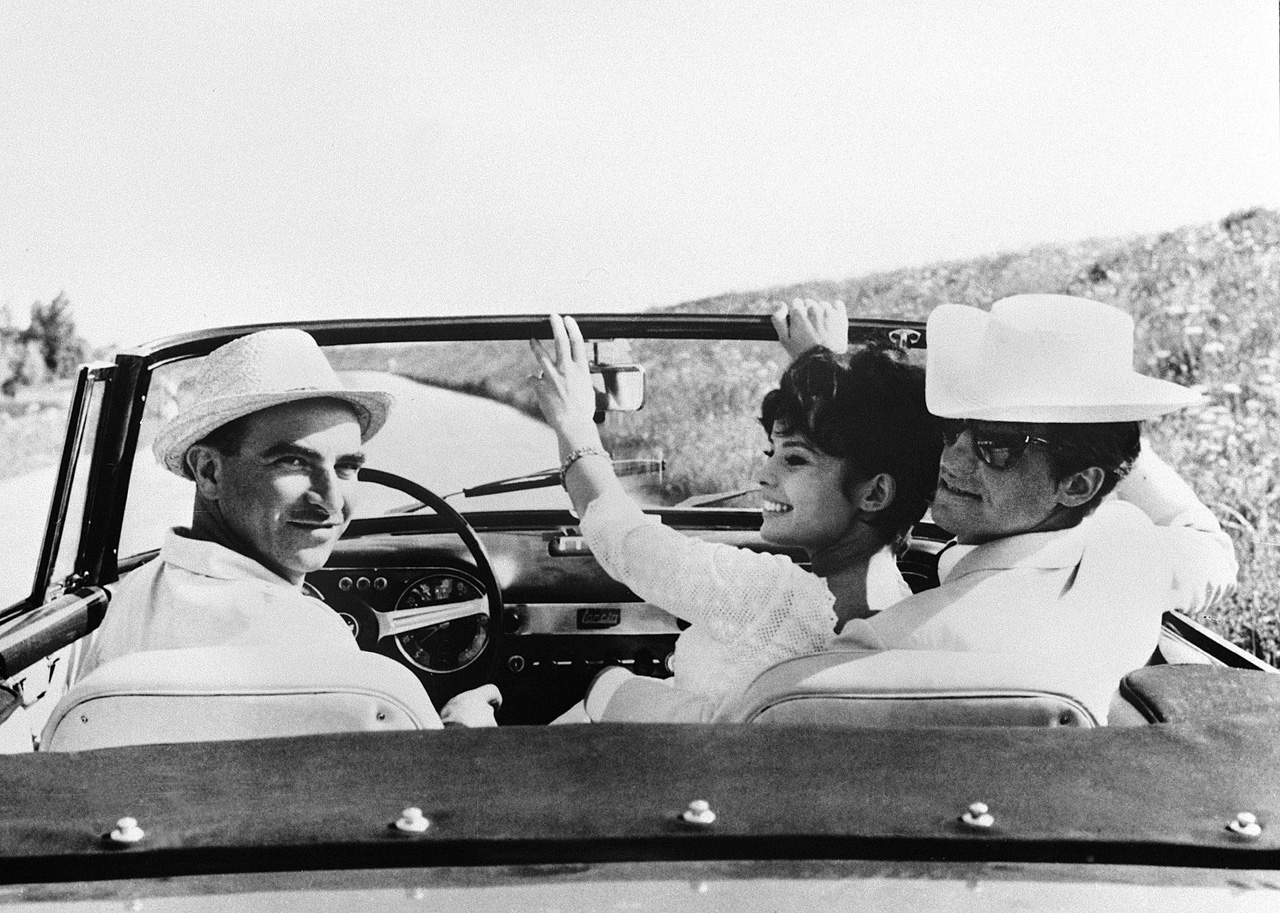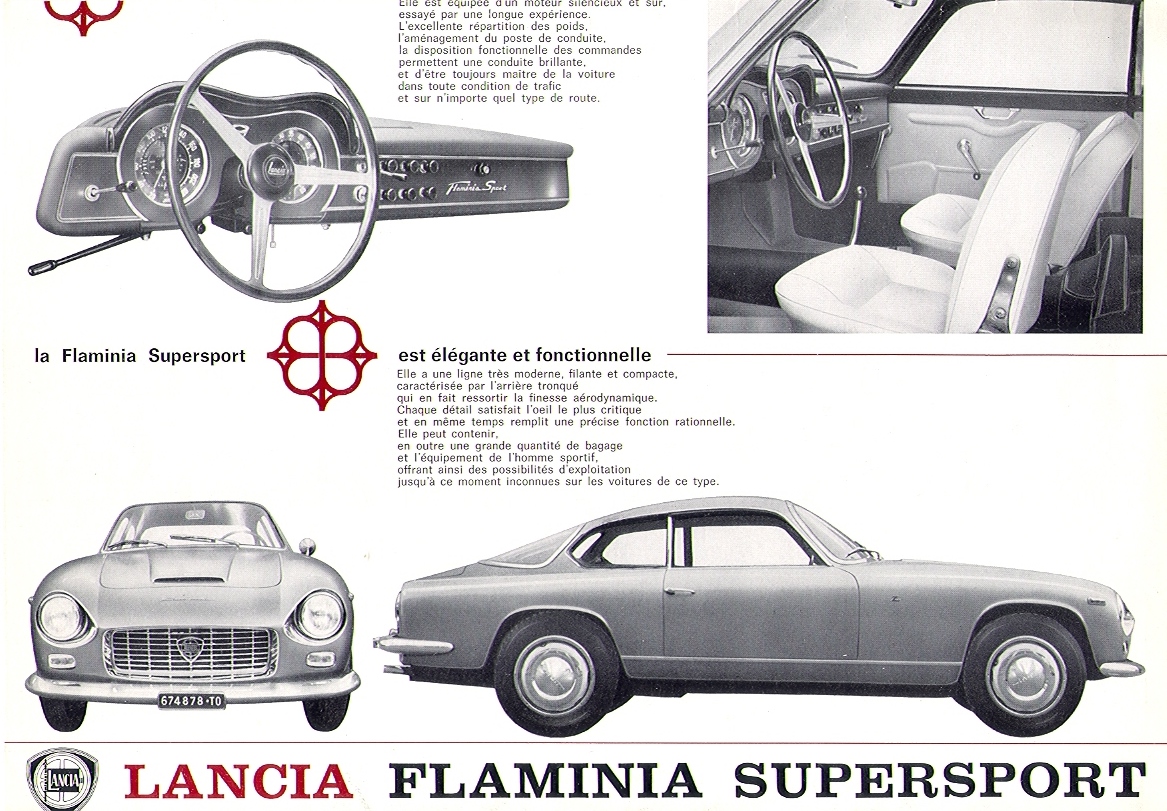"Lambda (1927) The Lambda was groundbreaking and radical. There was unitary construction when most other cars were ladder-framed with a coach-built body. It had independent front suspension and all-round brakes – as well as a highly sophisticated V4 engine. A milestone in "

The Importance of Being Lancia
The truck driver glances at his greasy wing mirror and drifts into the outside lane of the autostrada, making ground on the dawdling transporter in front.
Elephant racing – as it is known in here in Italy.
A blue flash to his left causes him to jump in his seat as a blur skims past below. His startled eyes catch up with the car as it careers at full lock, half in the dirt, half on the tarmac. All stability leaves the passing shape and it spins wildly as a shroud of dust and smoke falls over the scene.
The truck driver exits his cab, the icy chill of shock melting into an inferno of rage as he approaches a figure slumped over the wood rimmed steering wheel – “Who do you think you are? Fangio?” Through the open door he hears a groggy response. “I am Fangio.” The truck drivers face drops – ‘I’ve killed The King!’ he thinks, kneeling to help the legend to his feet.
The 1957 Italian Grand Prix is over and, until the truck appeared, the World Champion was gaining on Modena at a rate of over 100 mph. It was only his lightening reflexes and the superb handling of his car that saved the legend’s life. Fangio sustained a damaged wrist, however the Lancia Aurelia B20 GT he was driving escaped virtually unscathed.

During the golden era that wafted from the post war dawn of the fifties through to the end of the sixties, Lancia was the marque of choice for anyone with a discerning disposition. Born at the start of the century the company produced road going cars built on a pure race heritage; a philosophy distilled into creations that oozed passion, married with an air of sophistication.
Lann-chia, here was a manufacturer that represented the epitome of style.
Standing in the car park out side the casino in Saint-Tropez one might have seen a Ferrari 250 SWB, Maserati 3500GT or Lamborghini Islero, but these highly strung and temperamental brutes were the steeds of the prima donnas; loud, red and garish.
After all, who wants to arrive at a cocktail party full of directors, actresses and models with the aroma of oil and petrol clinging to their dupioni silk suit?
But the Lancia Flaminia Supersport, in metallic silver or deep azure, now here was a car that would elicit a subtle nod of appreciation from a fellow member in the parking lot. Here was a car any self respecting Riviera playboy would chose to crash in.

Lancia’s driving motive was always innovation. It is a brand built on a Grand Prix winning pedigree.
The Lancia D50 was a genuine Formula One masterpiece, a car coveted by Enzo Ferrari. When the team ran into financial troubles Ferrari bought the D50 and rebadged it to win the 1956 world title in the hands of one Juan Manuel Fangio.
However away from the track the Turin marque pushed the design envelope into a new realm. Lancia were the first to launch a production V6, with a rear mounted transaxel gearbox for better weight distribution and inboard rear brakes to reduce unsprung weight, plus all round independent suspension – all this in 1951.
Yet you could have this package in a four door family saloon. But the most important thing is it worked. It drove like nothing else, a willing free revving engine and forgiving chassis as much at home on the Monte Carlo Rally as the winding commute into Milan.
The base model Aurelia was an aspirational saloon from which the chassis was given over to the industry’s most cutting edge coachbuilders to weave their magic.
Like all great Italian marques, Lancia worked with Carrozzeria who clothed their products in designs that were both achingly beautiful as well as dynamic. The best minds at Touring, Vignale, Pininfarina and Zagato worked up exotic coupes and spiders that were hand built along side the Ferraris and Maseratis bound for the Shah of Iran or some Persian Prince.
The Aurelia, Appia, Flaminia, Flavia and Fulvia ranges all got tailored suits for their supermodel bodies. It really was a golden era for those who appreciated the very finest in automotive engineering.
What of Lancia in the modern world? Today it languishes like a fallen heavy weight boxing champion reduced to sparring with bums at a village carnival.
You feel depressed by the spectacle, but can’t help but stand and stare.
The current range makes Kias look pretty. As a brand it has drifted to the point where it resembles a rickety raft, to which Tom Hanks clings, talking to a sun-faded basket ball. “Why Wilson? Why are we re-badging Chryslers with our once illustrious name?”
They even make people carriers. People carriers?
Fangio would turn in his grave. But then truly great Lancias are still out there, skulking around the web, the stuff of myth or misinformation.
Look through the mist and for the price of a substandard Mk1 Escort RS, you could revel in the true magic of a Fulvia HF Coupe – rally winning heritage wrapped up in probably the prettiest coupe of the era.
And you’ll be safe in the knowledge that not only are you driving one of the greatest cars of motoring’s greatest era, but while you are out enjoying it, you’ll probably never see another. Exclusive, elusive and ethereal.
CLICK TO ENLARGE










Excellent and very evocative.
people-carriers ? Yes, Lancia made beautiful, if expensive, Flavia based people-carriers in the past…so what is new. Lancia Trucks ? Yes, now badged as Iveco !
It’s a travesty that we are going to get Lancia’s badged as Chevrolet over here. Surely the Lancia name is far more evocative and no more synonymous with poor quality than Chevrolet?
It’s a travesty that we are going to get Lancia’s badged as Chevrolet over here. Surely the Lancia name is far more evocative and no more synonymous with poor quality than Chevrolet?
oops, sorry about that, meant Chrysler not Chevrolet